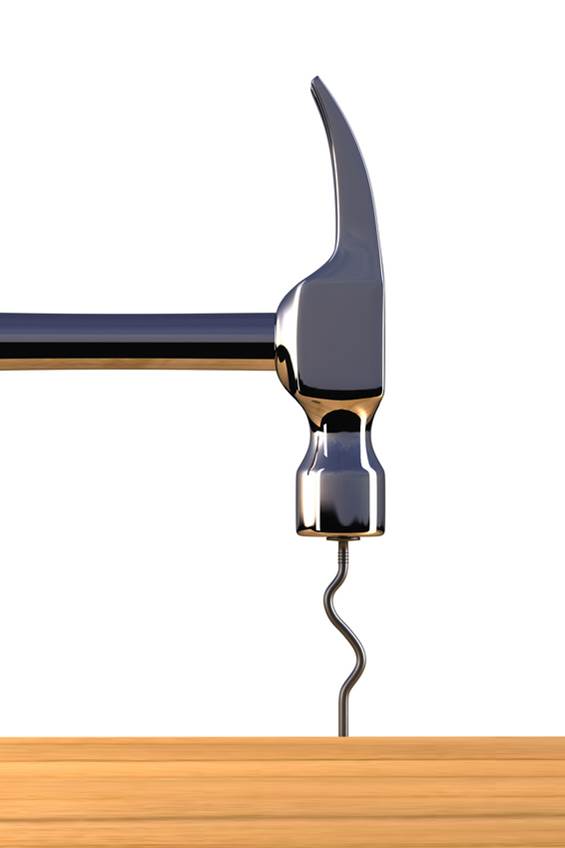There’s the familiar saying, “If all you have is a hammer, pretty soon everything starts looking like a nail.” I’ve adopted this, “If all you USE is a hammer, your success is limited to finding and pounding nails.”
Unfortunately, too many sales people have only one tool in their bags. It’s their product knowledge. What they are really good at doing is pitching the product. They may also be good at defending the product against alternatives.
So as long as that’s all the customer cares about, there’s a good chance sales people who only carry “hammers,” those who base their entire sales approach on product knowledge, then there’s a fair chance of success–they just have to be better than the competition on demonstrating product superiority.
But what if the customer really doesn’t care about the product? What if they care about solving their problem, addressing an opportunity, improving their business?
Then sales people who only use a hammer are screwed! (Sorry, I’ve been dying to use that line since the start of this post 😉
Sales people who only use a hammer are limited in their prospecting to finding people who are nails–that is people who only care about your product.
To be fair, there are a lot of people who have figured out they have a problem. They’ve done their web research, they evaluated alternatives, they’ve developed a short list. So they are interested in a product and selecting a product.
There are some challenges to this: Hopefully, they found ours during their evaluation. Hopefully, we made the short list. Then we could have some really interesting conversations with the customer. And who knows, we’ll probably win our fair share.
But what happens when there aren’t enough of those types of customers to enable us to make our number?
We’re screwed!
Master sales people, like master carpenters never limit themselves to one tool. They have a rich array of tools, selecting those that are most appropriate for the job at hand.
They leverage insight, creating clarity, consultative approaches, problem solving, collaboration, project management, developing and creating value, rich content, and any others. They choose those approaches that are most relevant to the customer they want to engage.
They leverage a combination of approaches as customers move through their buying process–choosing the tool that is most appropriate for where the customer is in their buying process.
The result is, the master sales person, the sales person adept at choosing the right tool for the job at hand, using it skillfully, and changing when appropriate has many more ways of finding and engaging customers to buy. The master sales person can keep themselves aligned much more effectively with the customer–wherever they are in their buying process, because they are adept at selecting and using the right tools.
The master sales person, competing with a sales person who only has a hammer, should normally win! They have much more flexibility in engaging the customer. The simplest is shifting the customer from thinking about the product to thinking about their problem—then the sales person with the hammer is screwed!
Well, I’ve made my point. If I take this much further, you’d probably think of me as a tool (I’m sorry–it’s just a sick mind, I can’t resist).
Postscript: I’ve steeled myself for the comments and tweets saying “Dave, you nailed it,” or “Dave, what a heart-wrenching post,” or “Dave, what tool do you use when someone’s chiseling you on price?” I know I deserve all of them 😉

Leave a Reply